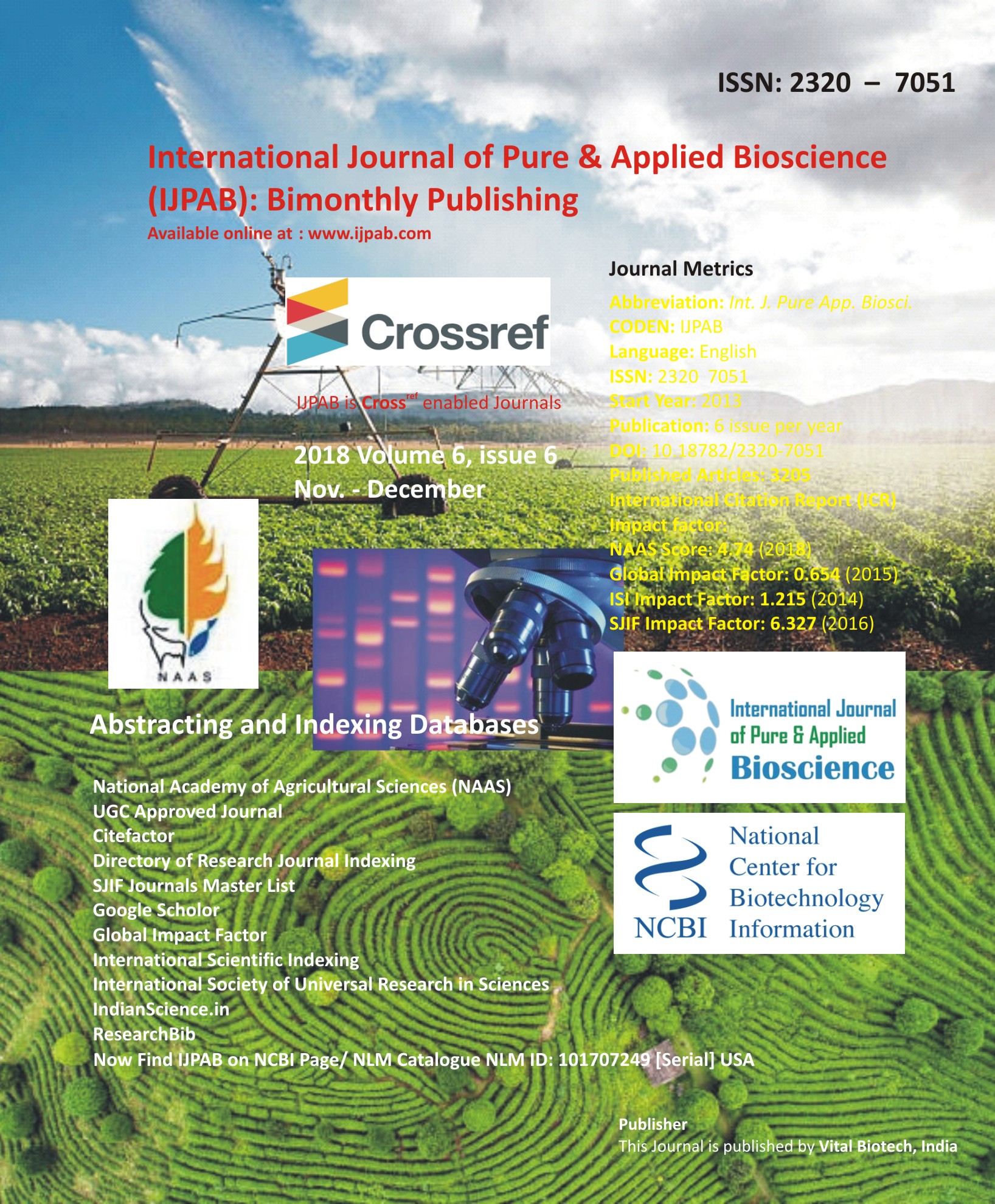
-
No. 772, Basant Vihar, Kota
Rajasthan-324009 India
-
Call Us On
+91 9784677044
-
Mail Us @
editor@ijpab.com
International Journal of Pure & Applied Bioscience (IJPAB)
Year : 2018, Volume : 6, Issue : 6
First page : (227) Last page : (234)
Article doi: : http://dx.doi.org/10.18782/2320-7051.7033
Wood Specific Gravity of Myristica Swamp Associated Tree Species
B. Tambat1*, C. S. Venkatesh2, G. N. Chaithra1, N. Rajaskekar Murthy2, Anil K. Sethy3,
B. Mohan Raju4 and M. Mahadev Murthy2
1Department of Crop Physiology, College of Agriculture, UAS-B, Hassan-573225
2Department of Forestry and Environmental Science, UAS, GKVK, Bangalore
3IWST (ICFRE), Malleshwaram, Bangalore
4Department of Crop Physiology, UAS, GKVK, Bangalore
*Corresponding Author E-mail: btambat@yahoo.com
Received: 30.10.2018 | Revised: 11.11.2018 | Accepted: 17.11.2018
ABSTRACT
Wood specific gravity is one of the important trait influencing the quality and quantity of pulp, strength and other wood properties. Myristicaceae (nutmeg) is one of the important families of flowering plants in tropics. There are more than 500 species which have wide distribution range. The Western Ghats of India, harbours 5 species of Myristicaceae namely Gymnacranthera canarica, Myrtistica fatua var. magnifica, M. dactyloides, M. malabarica and Knema attenuate. Interestingly, among them first two are exclusively associated with swampy habitat (water logged conditions) and possess several structural and morphological traits including aerial/knee roots. The other members occur in non-swampy upland conditions. In this study an attempt was made to understand and compare the specific gravity of obligate swampy and non-swampy species of Myristicaceae across the locations in central Western Ghats. Wood core samples of co-occurring swampy and non-swampy species were collected using increment borer. The samples were processed and specific gravity was assessed and compared across the locations in central Western Ghats. The results indicated that specific gravity of non-swampy species (M. malabarica) is significantly higher than the co-occurring swampy species (G. canarica). Further, the pattern was consistent across the locations. The specific gravity values frequency distribution pattern reaffirm the results. In conclusion, the study indicates that non-swampy species that are subjected to relatively drier environment tend to increase their wood specific gravity as an adaptive strategy. Our finding would help in developing long term strategies and action plans for conservation of swamps and associated species.
Key works: Myristicaceae, Swampy & Non-swampy, Specific gravity, Western Ghats, Wood
Full Text : PDF; Journal doi : http://dx.doi.org/10.18782
Cite this article: Tambat, B., Venkatesh, C.S., Chaithra, G.N., Rajaskekar Murthy, N., Sethy, A.K., Mohan Raju, B. and Murthy, M.M, Wood Specific Gravity of Myristica Swamp Associated Tree Species, Int. J. Pure App. Biosci.6(6): 227-234 (2018). doi: http://dx.doi.org/10.18782/2320-7051.7033

